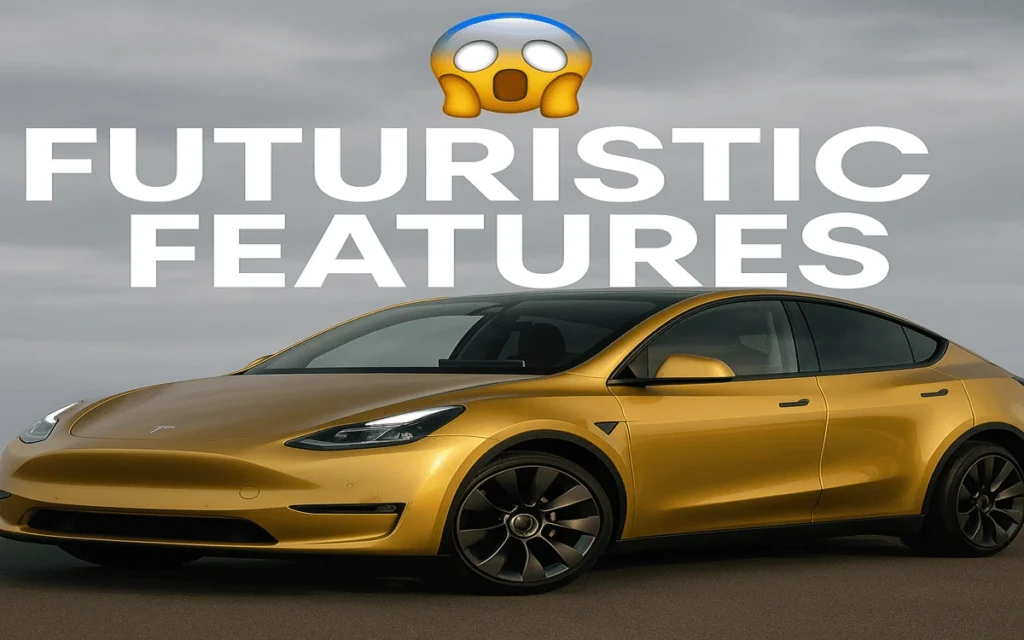
Tesla Model Y is the brand’s global best-seller—a compact, all-electric SUV that blends long range, quick charging, and a minimalist, tech-heavy cabin. Recent updates refine lighting, cabin materials, and noise suppression while keeping the familiar crossover silhouette. This review, current as of September 18, 2025, covers price, specs, features, and real-world appeal.
Sleek and Practical Design
Model Y keeps clean proportions and aero-smoothed surfaces that favor efficiency. Subtle lighting and trim tweaks freshen the look without changing the footprint, and a flat floor improves legroom. Aero wheels, flush details, and tight panel gaps help range and cabin quietness. A small optional third row appears on select versions, but the five-seat layout remains the most practical for most buyers.
Clear Display
Inside, Tesla’s minimalist approach centers everything on a large central touchscreen that controls navigation, climate, media, and vehicle settings. The latest software makes menus quicker to reach and richer in visuals, and over-the-air updates continue to add features. Instrumentation focuses on range, energy use, and driver-assist status. Traditional Apple CarPlay/Android Auto aren’t the focus; instead, Tesla leans on its own native apps and phone-key convenience.
Efficient Performance
Trim names and outputs vary by region, but the familiar spread remains: a long-range variant prioritizing distance, an all-wheel-drive setup for traction and punch, and a performance-tuned grade for quicker 0–60 runs. Acceleration in the quicker versions is sports-car brisk, while the long-range variants prioritize smooth, consistent thrust. Ride tuning aims for better isolation than earlier builds, with steering that’s light at low speeds and settled on the highway.
Advanced Camera System
Driver assistance is built around cameras and vision processing, with basic Autopilot standard and more capable supervised features available as paid upgrades. Lane centering, adaptive cruise, and automated lane changes reduce fatigue on long drives when used correctly. Parking aids and visualizations continue to improve as software evolves, though drivers must remain attentive at all times.
Battery & Charging
Model Y supports rapid DC charging on Tesla’s Supercharger network, with peak rates that make road-trip stops short when conditions are ideal. Home AC charging remains the most convenient way to start every day full. Real-world range depends on speed, weather, elevation, wheels, and temperature management; long-range versions routinely cover long commutes and weekend trips with minimal planning, while performance trims trade a little efficiency for speed.
Connectivity and Features
Connected navigation plans routes around charging stops and shows real-time stall availability at many sites. The Tesla app handles pre-conditioning, charge scheduling, lock/unlock, and software updates. Cabin storage is clever, rear seats fold flat for bulky items, and the front trunk adds extra liters of everyday usefulness. Optional upgrades include premium audio, enhanced driver-assist features, and wheel/tire packages.
Pricing and Availability
Pricing varies by market, taxes, and incentives. In general, the lineup spans from an entry long-range configuration in the mid-price bracket for EV crossovers to a higher-priced performance model. Delivery timelines fluctuate with factory output and regional demand; check your local configurator for exact trims, colors, and estimated delivery windows.
User Feedback and Drawbacks
Owners praise charging convenience, one-pedal driving ease, and running-cost efficiency. The minimalist cabin and touch-first interface appeal to many but won’t suit everyone who prefers conventional buttons. Ride quality can feel firm on larger wheels, and the learning curve for camera-only parking can take time. Build polish has improved over the years, though shoppers should still inspect deliveries carefully.
Comparison with Competitors
Cross-shop the Model Y against the Hyundai Ioniq 5, Kia EV6, Ford Mustang Mach-E, Volkswagen ID.4, and premium options like the Audi Q4 e-tron and Volvo EX40/EC40. Tesla’s big advantages are charging-network breadth and strong long-range efficiency; rivals often counter with more traditional interiors, different styling flavors, or specific feature bundles.
Speculative Notes
Equipment, battery chemistries, wheel options, and software features can change region-by-region and over time. Range ratings also differ between WLTP and EPA cycles. Always confirm current specifications, pricing, and incentives on your local order page before committing.
Final Thoughts
The Tesla Model Y remains a default choice in the electric-SUV world because it covers the basics so well: range, charging, and everyday usability. With incremental refinements rather than dramatic reinvention, its appeal now rests on whether you prefer Tesla’s streamlined, software-first approach or a more traditional cabin from competitors. Either way, it stays firmly on the short list for families and commuters moving to an EV.

